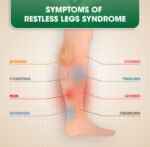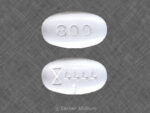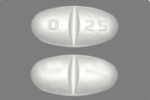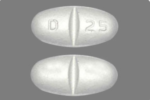Gabapentin, also known by the brand name Neurontin, is a prescription painkiller belonging to its own drug class, Gabapentinoids. It is considered an anti-convulsant, and is most commonly used to treat epilepsy, restless leg syndrome, hot flashes, and neuropathic pain. It is often used as a less-addictive alternative to opioids; however, Gabapentin addiction and abuse still occur in many patients.
Gabapentin has a similar chemical structure to Gamma-aminobutyric acid (GABA), the brain chemical which affects the body’s nervous system. It can produce feelings of relaxation and calmness, which can help with nerve pain, anxiety, and even poor sleep.
Gabapentin is prescribed to treat nerve pain, alcohol and cocaine withdrawals, restless leg syndrome, diabetic neuropathy, fibromyalgia, and seizures. It works by altering one’s calcium channels to reduce seizures and ease nerve pain. Some brand names of Gabapentin are Neurontin and Gralise. The drug’s known street names are “gabbies” or “johnnies.”
In addition its potentially addictive nature, Gabapentin can cause suicidal thoughts, moods swings, and abrupt changes in a user’s behavior. It can also cause elevated blood pressure, fever, sleep problems, appetite changes, and chest pain.
![]()
The word narcotic is derived from a Greek term “narkō” which translates to “make numb.” Many people use the term narcotic in a broad sense to describe any psychoactive substance, particularly those that are capable of inducing sleep (i.e. hypnotics).
In the United States, most individuals think of opioids and opioid-deriviatives when they hear “narcotics.”

Opioids like heroin, morphine, and synthetic formulations like hydrocodone are regarded as narcotics. Most addictive drugs associated with significant psychological and/or physical dependence and/or “controlled-substances” may be considered narcotics. Due to the fact that Gabapentin is not associated with addiction nor dependence, it is not commonly referenced as a “narcotic.”
While some would argue that the drug is addictive and dependence (especially psychological), most literature suggests otherwise; hence its non-inclusion in the list of “controlled-substances.” That said, some have suggested that the closely-related drug Pregabalin (Lyrica) is a controlled-substance and therefore Gabapentin should also be.
Legally, Gabapentin is not considered a narcotic. It is not a controlled substance, has a low potential for abuse, and is not medically associated with dependence.
While the drug is capable of acting similarly to benzodiazepines (e.g. Valium) in that it affects neurotransmission of GABA, its effect is different and it is considerably less potent.
The intoxicating potential of Gabapentin pales in comparison to federally classified narcotics like heroin. Most recreational drug users aren’t seeking out Gabapentin over the legitimate narcotics like morphine, hydrocodone, oxycodone, etc. At higher doses, the bioavailability of Gabapentin decreases, making it tougher to abuse and ultimately safer than federally classified narcotics.
Potential for Misuse
Although gabapentin is not a controlled substance at the federal level in the United States, there have been concerns about its misuse or abuse, especially when taken in higher doses or with other substances like opioids. Some states have reclassified gabapentin as a controlled substance due to its potential for misuse.
Key Differences Between Gabapentin and Narcotics:
- Mechanism of Action: Gabapentin affects nerve signaling, whereas narcotics (opioids) act primarily on opioid receptors in the brain to relieve pain.
- Addiction Risk: Narcotics have a high potential for addiction and physical dependence, while gabapentin has a lower potential for abuse, though it still exists in some cases.
- Controlled Substance Status: Narcotics are typically classified as controlled substances, while gabapentin is not federally controlled, though some states have enacted restrictions.
Why is Gabapentin not a Controlled Substance ?
It’s a fairly new drug, having been first introduced in 1993, and the generic version was introduced in 2004. As such, its uses, mechanism of action, and negative effects are still being studied.
Gabapentin appears to be involved with the GABA neurotransmitter, but does not seem to affect the receptors manipulated by common drugs of abuse such as opioids and benzodiazepines. Due to this, it’s not commonly thought of as a drug of abuse and is not on the list of controlled substances in the United States. However, it has properties that are similar to many commonly abused intoxicants and has been known to produce withdrawal symptoms and psychoactive effects.
Signs of Gabapentin (Neurontin) Addiction
Though the potential for addiction to gabapentin is low, it can still happen, and such an addiction is a serious issue due to its rather high potential for overdose death. When it comes to addiction to a prescription drug, the signs to watch out for differ depending on whether the individual taking it has a prescription or not. If you suspect someone is taking gabapentin without a prescription, you can watch for the following side effects of the drug:
- Dizziness
- Drowsiness
- Memory loss
- Loss of coordination
- Tremors
- Jerky movements
- Unusual eye movements
- Double vision
- Fever
- Difficulty speaking
- Depression or anxiety
If an individual is taking gabapentin with a prescription, then these side effects are not necessarily a sign of abuse or addiction, though side effects often become more likely the more one takes. Addiction itself comes with a number of general symptoms, and a few specific to prescription drugs. Common signs of prescription medication addiction include:
- Lying about or exaggerating symptoms to doctors
- Seeking out multiple doctors to get extra doses
- Switching doctors after the original doctor refuses to continue prescribing the medication
- Changes in social habits and/or circles
- Changes in personal hygiene and grooming habits
- Constant preoccupation with the drug
- Unease at the thought of the drug being unavailable
- Refusal to quit despite social, financial, or legal consequences
- Failed attempts to quit
Lastly, withdrawal symptoms after stopping all use of a drug is an indication of addiction. This happens when a tolerance to the drug has developed, requiring a higher dose to achieve the same effect.
Pain Medications, Pain Relief, and Pain Management






